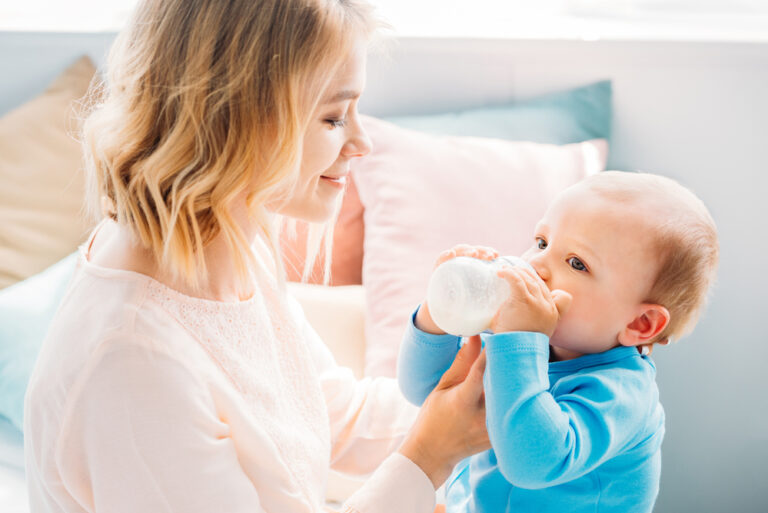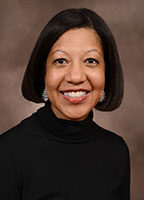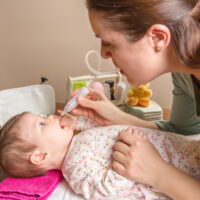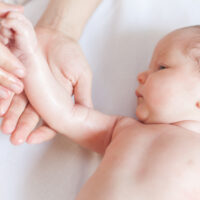How can you best support your infant’s health, and maintain their hydration? This is a burning question of many parents, particularly when they have a sick little one at home. Introducing water to a baby is common around the age of 6 months, so you may also be wondering whether or not Pedialyte is an option. If so, how much Pedialyte can you give your 6 month old?
Below, you will find our advice, but we always recommend that you consult your pediatrician. Definitely contact him or her if you notice signs of dehydration in your baby. After your child’s first birthday, you may follow the recommended instructions on the Pedialyte bottle.
What is Dehydration?
Dehydration is when fluid intake is less than the amount lost. Oftentimes, this occurs during an illness, particularly if there is sweating from a fever. The most common causes of dehydration in infants, however, are vomiting and diarrhea (source). If a baby is excessively loses fluids and electrolytes, and is unable to replace them by eating and drinking, dehydration can occur. Sweating causes fluid loss while outdoors on a hot summer day or during exercise. An oral rehydration and electrolyte solution such as Pedialyte can provide replacement fluid in any of these situations.
Babies aren’t able to tell us when they don’t feel well, so it is important to observe them for signs of discomfort. The symptoms of dehydration can vary. Mildly dehydrated infants may produce fewer wet diapers in 24 hours, but may not look terribly ill. Moderately or severely dehydrated infants may display fever, lethargy, crying without producing tears, or a dry mouth. The “soft spot” on the top of the head may appear sunken (source). In addition to these symptoms, older children and adults may exhibit constipation, headaches, lightheadedness, dry skin, dark colored urine, crankiness, or excessive thirst.
Around six months old, once you begin to introduce solid foods to your baby, it is appropriate to give your infant four to eight ounces of water per day (source). If your baby is not feeding well while losing fluid due to an illness, Pedialyte may be recommended by your pediatrician.
What are Electrolytes?
Electrolytes are essential elements that keep the body functioning properly. When broken down, electrolytes provide a small electric current inside the body. This electric current transmits from cell to cell, helping your nerves, muscles, and organs to operate correctly.
In addition to providing an electrical current, electrolytes regulate your body’s fluid levels, maintain the blood’s pH, and are useful in building new tissue, just to name a few functions.
The electrolytes found in your body are Sodium, Chloride, Potassium, Magnesium, Calcium, Phosphate, and Bicarbonate (source). Each electrolyte plays a different role. Electrolytes naturally occur in breastmilk, and they are added to infant formulas. Once foods are introduced, we acquire electrolytes when we eat a well-balanced diet of fruits, vegetables, and proteins. With the exception of a few congenital disorders, most infants can easily regulate the correct amount of what the body needs (source).
However, in situations of dehydration, rapid replacement of electrolytes is essential. Whether due to illness, sweating, exercise, etc., keeping an electrolyte drink on hand, like Pedialyte, is a great idea.
Why Pedialyte?
Water contains very few electrolytes on its own, so a fortified oral rehydration solution such as Pedialyte is more effective when battling dehydration. Especially with kids, your first go-to might be juice. However, fruit juices and sports drinks tend to have too much added sugar (source). The additional sugar can irritate an already upset stomach, and sometimes cause more diarrhea.
Pedialyte contains three main electrolytes: sodium, potassium, and chloride. With higher levels of sodium and less sugar than most leading sports drinks, Pedialyte is preferred for rehydration. Some liquid Pedialyte products also include Zinc which is great for your immune system (source). If you or your child are dehydrated due to an illness, the added Zinc can be beneficial.
Options include unflavored Pedialyte or one with a subtle flavor if you think it will entice your baby to drink more. The liter bottles come pre-made, so there is no need to mix or measure. While it’s not required, most flavors taste better if served cold.
How Much Pedialyte Can a 6 Month Old Have?
As previously stated, Pedialyte should not be used under 12 months old without the guidance of a medical professional.
At 6 months old, babies are still receiving most of their nutrients, hydration, and electrolytes from breast milk or formula. If your baby is ill and you choose Pedialyte to help increase hydration, it should be given in addition to their usual feedings. Do not replace a bottle-feeding with Pedialyte unless directed by a doctor.
It is a smart idea to introduce Pedialyte gradually, and to work up to the recommended doses, particularly if your child is wary of a new taste. Offering it slowly will also allow it to be easily absorbed by the stomach and intestines, decreasing the likelihood of vomiting (source). The recommended doses from Nationwide Children’s Hospital are according to your baby’s weight. Per their recommendations, you could offer 2.5 ounces per hour if infant weighs 15 lbs. See below for additional weights:
| Child’s Weight | Amount of Liquid |
| 10 lbs. | 2 ounces every hour |
| 15 lbs. | 2 1/2 ounces every hour |
| 20 lbs. | 3 1/2 ounces every hour |
| 40 lbs. | 6 1/2 ounces every hour |
| 60 lbs. | 10 ounces every hour |
According to the World Health Organization (WHO) and Centers for Disease Control (CDC), the average weight of a male 6.5 month baby is 18 lbs, and a female 6.5 month baby is 16.5 lbs. Using this as an example, you would be able to offer 2 1/2 ounces of Pedialyte per hour. Make sure this is in addition to regular breast milk or formula feedings.
You may choose to offer Pedialyte as a full drink, or offer your baby a few sips throughout the hour. If your infant vomits or has immediate diarrhea, try waiting an hour before offering it again.
If at any time you have questions regarding your child’s level of hydration, contact your pediatrician for additional guidance.
What Foods Are High in Electrolytes?
As you’re introducing new foods to your 6 month old baby, there are certain foods that are naturally high in electrolytes (source). Fruits such as strawberries, bananas, avocados, and oranges are great options. Leafy green vegetables and broccoli also have high levels of electrolytes.
Meats, turkey, chicken, fish, and nut butters are excellent choices. If your child is old enough, milk and yogurt are also great options for introducing calcium and phosphorus. Canned and prepared foods will likely contain electrolytes, especially sodium, which is important as well.
As your child begins to explore more and more foods, other options to consider are tofu, pumpkin and chia seeds, coconut water, beets, and almonds.
A great idea is to blend a few of these foods into a smoothie. Not only does it make a delicious treat, but it will also boost electrolytes and hydration.
FAQs about Pedialyte
What Pedialyte products are available?
The manufacturer of Pedialyte offers a variety of options, including liters, powders, and even freezer pops. In addition to their original formula, immune support and advanced care products are also available.
For babies, we recommend sticking to the classic Pedialyte or Pedialyte Organic liters. Both are low in sugar, and ready-to-use, with no mixing or measuring necessary. Pedialyte is shelf-stable, but tastes best when served cold.
Where can you purchase Pedialyte?
Pedialyte can easily be found in most grocery stores and pharmacies as well as online. It is sold online at retailers like Amazon, Target, and Walmart.

Is the Pedialyte freezer pops a good option?
If you have a teething baby, and are trying to lower a fever while keeping him or her hydrated, the Freezer Pops are a great option. Each pop is equivalent to 2.1 ounces of Pedialyte. This would fall under the recommended amount for an average-sized 6 month old baby.
Final Word
Whether battling the stomach bug, or enjoying a day of playing hard in the sun, preventing dehydration is especially important for babies. Always stay in contact with your pediatrician for the best advice on how to safely help your baby.
While your baby is likely getting all the hydration they need from breast milk or formula at 6 months old, it doesn’t hurt to have a backup plan. When used correctly, Pedialyte can help rehydrate, and keep potential dehydration at bay. So how much Pedialyte can a 6 month old have? Up to 2.5 ounces per hour seems to be the best rule of thumb for an average-sized 6 month baby (15 lbs) (source).
Whether you allow your baby to sip the 2.5 ounces over the course of an hour or give a frozen treat, you can ease your mind while soothing your sick baby. If you’re looking for advice and recommendations on how to transition your baby to a sippy cup, check out our recommendations here. Now is a great time to practice cup skills, and get comfortable with the variety of options.
Pedialyte also works great for older children and adults. If the stomach bug is making its way around your home, keep a couple of liters on hand for the whole family.





